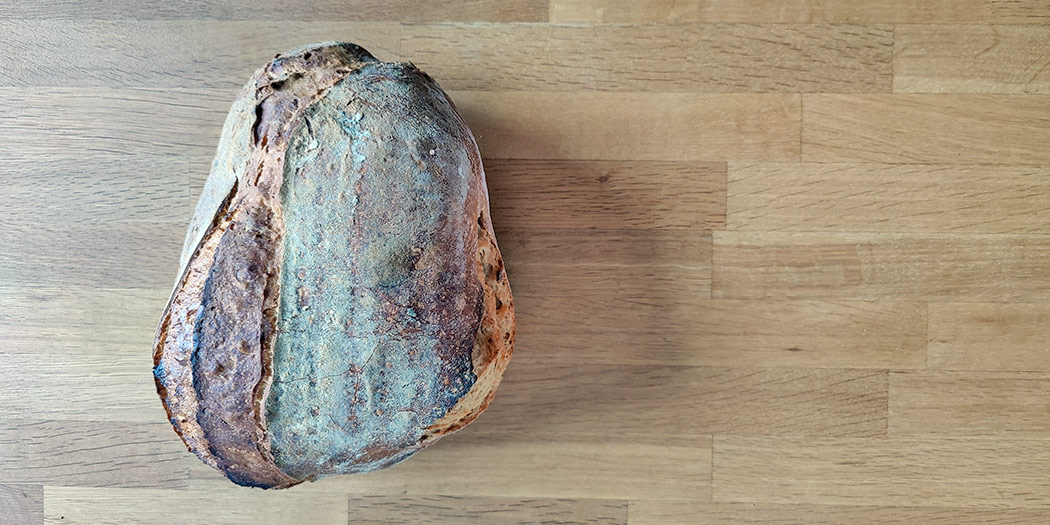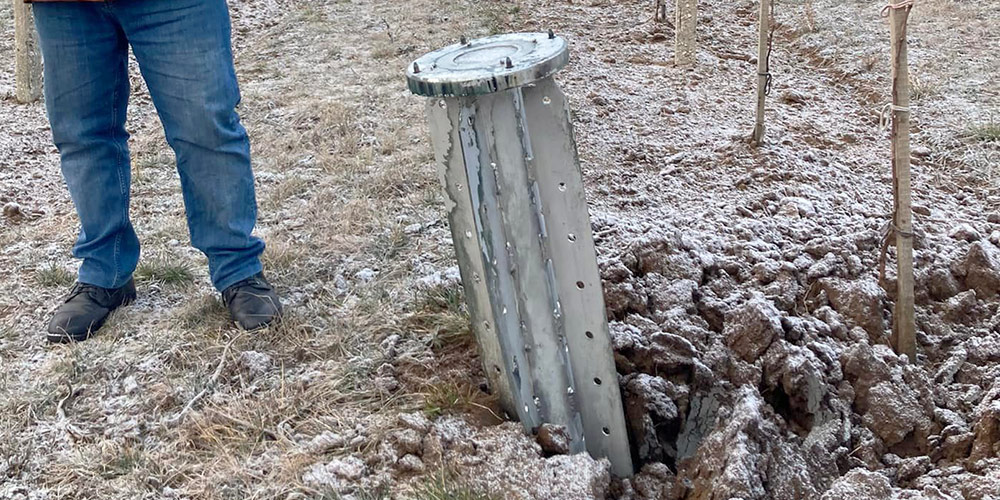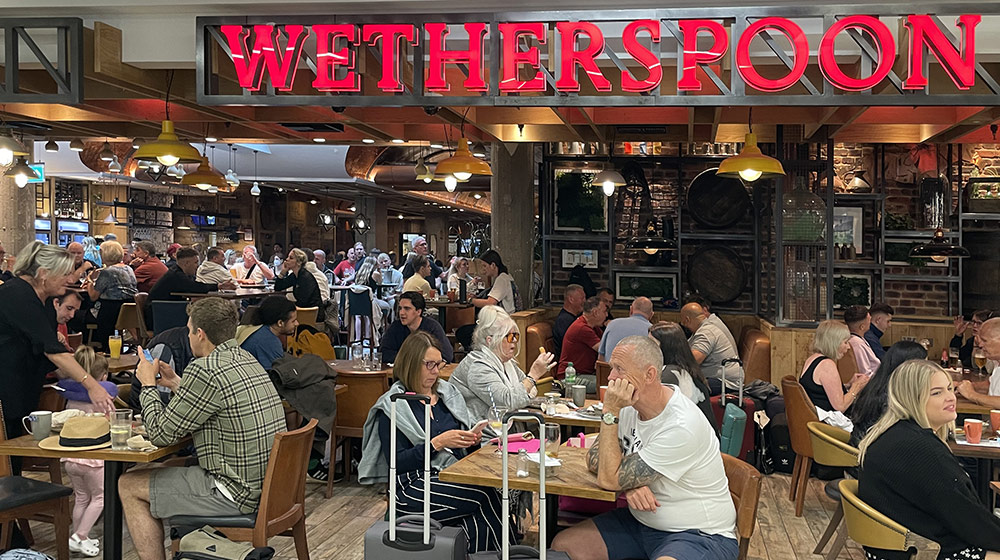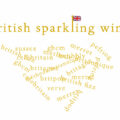Bread may be a meal, but wine is life and it’s little surprise that we’ve had both for more or less the same amount of human history.
We shall never be allowed to forget that traces of winemaking were found in Georgia dating to 6,000 BCE and while we seem to have made some form of bread for nearly 15,000 years, leavened breads in Mesopotamia also date to that 6,000 BCE timeframe, giving us 8,000 years of bread and wine.
I’m not shocked by this as, in addition to pairing well with one another, both require a key component for their creation, which is for a people to be settled. One can’t ferment wine on the go from “found” grapes, nor can one attempt to bake bread based upon the hope you’ll encounter enough rando wheat to make flour, which I need to add, requires something heavy and not terribly portable to grind it.
Sigmund Freud may have declared “soap is the yardstick of civilization” but for me, being “civilized” is defined as baking bread and making wine; all else is window dressing, or at the very least just riding the coattails of excellence that is bread and wine.
A passion of dabbling
I love them both dearly and I never set out to be a baker nor a winemaker. I would in fact still attempt to call myself a “writer” (despite audible groans from my bank account) in active deference to those who bake exceptional breads and those who make wonderful wines.
Despite this, I’ve found myself dabbling in the delicious arts of baking and winemaking for the past few years. For wine, it’s out of curiosity to gain more depth in writing. For bread, it’s out of survival as what passes for “bread” in Spain is horrific and no, being able to buy bread at a gas station is whatever the complete opposite of culinary excellence is, no matter what bizarre travel articles about Spain have said.
It’s true that there is little in common with the base materials of bread and wine. Wheat is a grain and grape is a fruit. However it is the case that they share great diversity but at the same time, not.
There may be upwards of 10,000 grape varieties in the world, but there are only a few that have become exceedingly popular with 13 types making up 1/3 of the total vineyard area alone and I feel even that’s a bit of an undercount given that Cabernet Sauvignon alone is 340,000ha of the 7.28 million planted vineyards.
It’s similar with wheat where triticum aestivum makes up an astounding 95% of all the wheat produced in the world.
Wine grapes and wheat aren’t anomalies though as we’ve seen consolidation in pretty much everything we consume and monocropping has become sadly so omnipresent.
But due to this, there’s been recognition that there is no future along this path. Not only is it boring, but these mega-varieties of today, may not stand the test of tomorrow. There’s been the rise of other wine grapes such as Carignan, and long lost varieties such as Forcada. It’s the same with grains where there’s been growing interest in not just different types of wheat such as Khorasan (Kamut) or Xeixa but also non-wheats for bread such as the classic Rye.
It’s all in the yeast
It’s the making either bread or wine when there arrives this collision of consumables and my devout fascination kicks in as not only do both ferment, but they use the same exact yeast called, saccharomyces cerevisiae. What a wonderful little fellow this is. Without him, there would be no bread, there would be no wine, and there would be no beer. In general, life would be exceedingly boring with the train of a numb existence having broken down several stops short of Flavor Town.
Bread is more unique than wine as in the latter, there’s simply a job to do as the yeast breaks down the sugars into CO2 and alcohol, but the wine stays a liquid. For bread, it’s so much more complex and I feel it’s nearly impossible to master that exact moment when you need to catch the yeast in action to trap the outbound gasses in the bread and raise the body of the loaf. But, you can’t let it go too far as then there won’t be anything left when you bake it and you can’t do it too early as there won’t have been enough structure built up to hold the CO2.
To some extent, I realized a while back that bread and sparkling wines have even more in common than bread and still wines as the whole goal is to trap that gas and achieve the delicate balance of being finished while holding finesse.
An infinite curve
I am no natural at wine nor bread and my first attempts at either of these processes were, “tricky” in the end results.
With wine in 2014, it was fine, but not amazing as I was just learning the bare minimums. Bread started at the end of 2019 (yes, just before the pandemic hit, strange bit of foresight on that) and the first loaves turned out well, but then I started trying things and they got a good deal less nice for some time.
The reason is that I didn’t understand how fermentation worked in bread, given that it’s such a different application than that of wine. Also combined in this is that any text on wine will generally agree to simply let the yeast ferment until there is no more sugar. For bread, the number of opinions out there online are staggering, conflicting, and maddening. I can’t really imagine how someone could start out baking bread from scratch these days as the internet is a lake of follies waiting to stepped in.
The only real solution I’ve found for making bread, just as much for wine, is trial and error. I’ve never named my starter (now five years old) as it’s simply a tool, but I did name my wines, if for no other reason than to eventually sell them. But while I’ve learned with bread that you can make several batches at once to test theories, you can never do this with wine.
In 2021 as I made two Grenache wines, fermented more or less the same way, but from different plots and one nearly went sideways on me, but ultimately has proven to be my preferred wine. The irony is that it’s the bolder one that sold out immediately, so there’s a lesson in general tastes to be had as what wine critics and writers like, isn’t really what the public likes. Bread is far easier in this regard as even if it’s not a great loaf, it’s still bread and still better than what the gas station or even local bakery has on offer.
Naturally
If there is gas station bread that’s much like industrial wine, then is there “natural” bread like there is “natural” wine?
While I’ve long-made both in what would be defined as a “minimal intervention” manner, I would posit that neither can ever be truly “natural” in the purists’ definition as there is tremendous manipulation of both in order to reach the end product. Fermentation is in fact, exactly that, the manipulation of one base element into another via a process and the process in both bread and wine will result in a quite squalid result if you don’t mind it, ie intervene. One is after all making bread and making wine, not letting them sit in a dark room for a spell to come back and find them finished on their own as convenient as that would be.
But for all of my fascination with this and for lack of a better word, via the “natural” process of fermenting wheat into bread and grapes into wine, I’ve found that fermentation, is indeed, a bitch.
As Heraclitus said:
“No man ever steps in the same river twice. For it’s not the same river and he’s not the same man.”
You can never really make the same loaf nor the same wine twice. I would love to repeat the 2021 wines again and make a great many more of them, but of course when 2022 rolled around, it resulted in a completely different wine—different weather and different me I suppose. Even if I held a fine degree in enology like many of my friends who are actual winemakers, there’s not much to be done in this department and we’ve learned to embrace change being part of wine given that it’s inevitable and it keeps things interesting.
It’s somewhat the same with bread in that just as soon as I think I have it nailed, the next loaves that emerge look like that one above, a general disaster. It’s interesting to me that while both bread and wine are the result of a fermentation, it’s bread where we don’t want it to vary. In fact, in this age of social media, its need to look like “bread” seems to be more important than anything, even taste.
With bated breath
There is however nothing finer than that moment of taste, when you put a wine to your lips that was bottled a year previously or you slice off the bit of a loaf that’s come out of the oven and you’ve (ideally) let cool. You raise it to your mouth and take in the work that came before it, experience and time washing across your tastebuds.
Few would be surprised to learn that I’m rather critical of what wines and loaves I’ve made. I always like them to be just a bit more “this way” or “that way” the next time around. Thankfully with bread I can try again a few days later, but with wine, the wait is longer.
Even if a loaf of bread or a bottle of wine maybe didn’t come out exactly the way it was intended, as long as you have actually worked with intention (a key point), with good starting ingredients, they’ll still be plenty fine to imbibe. These are after all social foods. The classic paintings with a loaf and a bottle in the middle are too many to list as wine and bread would seem to be at the core of human existence across Eurasia, or at least for the last 8,000 years give or take.
While I may claim loftier, academic goals of learning and feeding my curiosity, I make bread and wine to share and this, is ultimately the greatest reward as it’s one anyone can taste, enjoy, and ideally want another glass or slice of.





Miquel,
I’ve recently bought, read and followed advice from Ken Forkish, from his book, Flour, Water, Salt, Yeast. I reccomend it. I’ve never produced more beautiful loaves.
I have it!
And so, so many others…